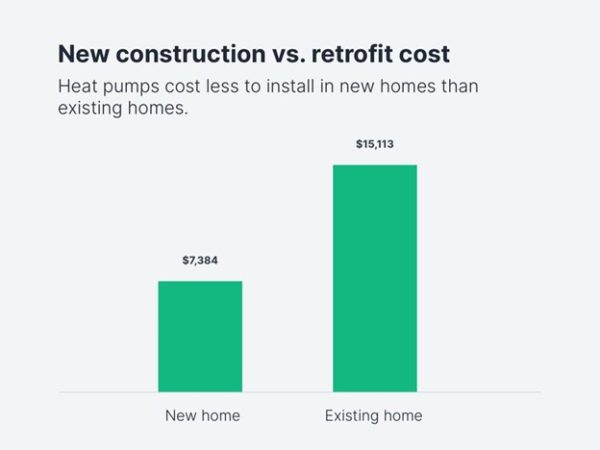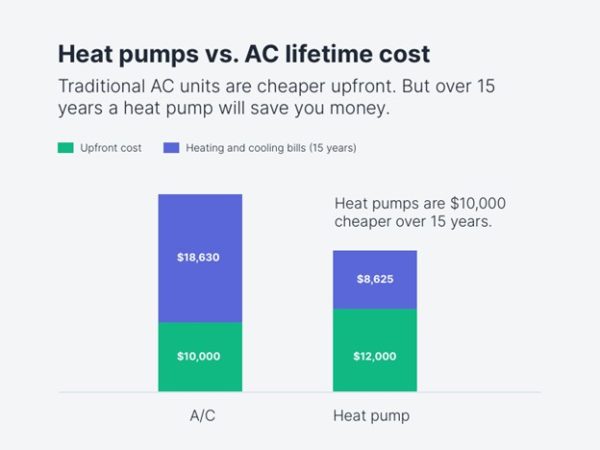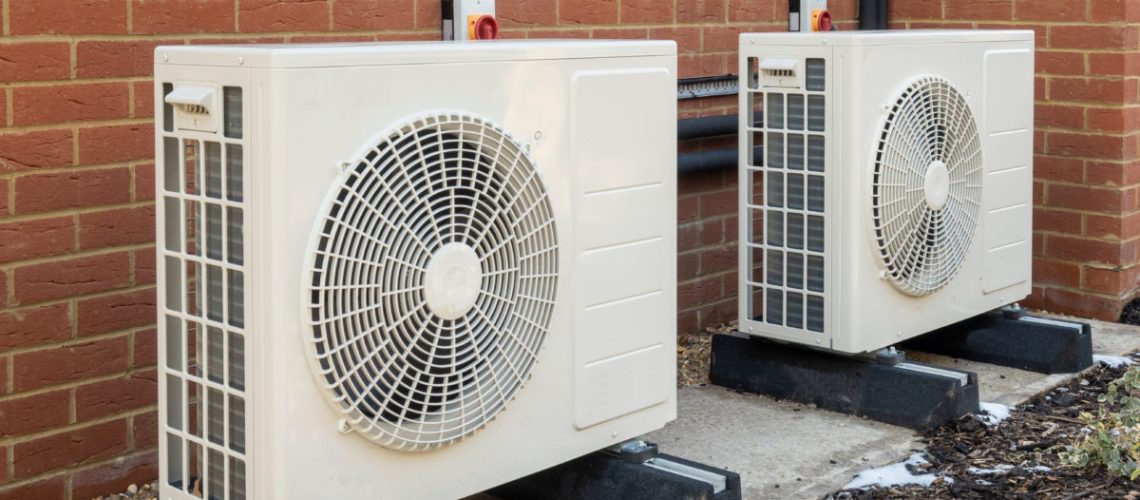The “all electric” movement is shining new light on heat pumps. A recent survey looks at their costs in terms of replacements for heating and air conditioning systems.
May 25, 2022
In the quest to electrify everything, it appears that heat pumps are the answer for many homeowners, according to a recent survey conducted by Carbon Switch, a producer of research and guides on how to live more sustainably. Carbon Switch surveyed 125 homeowners in the United States and Canada, reviewed previous research, spoke with installers, and analyzed data from states including Massachusetts and California.
The bottom line is that the average cost of a heat pump is $14,000 after rebates. But there’s a huge difference costs depending on rebates available, size of the home, location, whether the home needs ducts, and more.
As far as rebates go, some of the homeowners surveyed got zero in rebates, while others got as much as $14,000. The average rebate was found to be about $1,500. Not surprisingly, New York and Massachusetts have some of the most generous rebates, ranging from $2,500 to $10,000. Rebates can vary (and not be obvious). For example, Central Hudson (upstate New York) customers can receive $1,000 per 10,000 BTUs if they replace a fossil fuel heating source, so at least $3,000 for a typical 3-ton system. The DSIRE database is a good place to start.
The survey found that home size directly correlates to the cost of heat pump installation. According to the survey, heat pumps for a 1,500 to 2,000 square foot home was $16,933. And a home of over 2,000 square feet averaged $19,117. For mini-splits, the number of zones in a home was another cost factor, ranging from $7,100 for 1 zone up to $26,573 for five zones. The bottom line on the size of home/cost correlation is that more than half of the homeowners surveyed paid between $4 to 10 per square foot, with the most common installation costing between $4 to 6 per square foot.
Location is a factor as the market for heat pumps is more mature in the South, and costs tend to be lower. Also the homes in the South are generally already wired for electric heat, which saves some retrofitting costs. The Northeast and West are more dependent on fossil fuels and have not yet embraced heat pumps, so costs are higher. The survey found that across the South, costs averaged $7.33 per square foot. In the Midwest, the average was $7.44 per square foot. In the Northeast and West, costs were over $8 per square foot.

The survey also found that costs are far lower when heat pumps are installed in new construction compared to existing home. In new construction the average was $7,384 after rebates and $6.54 per square foot. In an existing home, the average heat pump installed was $15,113 after rebates and $8.15 per square foot. Why? Because the electrical service can be designed for a fully electric home, and ducts and mini-split lines can be run before the walls are enclosed.
Other factors to consider include what type of heating system is being replaced. Some states offer rebates priced per heating ton when switching from fossil fuels. New York, for example is offering $2,500 per heating ton in rebates if a homeowner switches from gas, propane or fuel oil. Another factor is whether the home already has functional ductwork—if not the installation involves major renovation, and thus higher costs. And a final consideration is the electrical panel. Upgrading the panel to accommodate new equipment also boosts costs.

Kevin Purdy, author of the survey summary“Are heat pumps worth it?”, noted that upfront costs are only a fraction of the energy picture. ”Heat pumps can save the average US homeowner $10,000 throughout the unit’s lifetime. They replace both a furnace and an air conditioner, and they’re usually more comfortable and efficient than either of them. They free your budget from fluctuating fuel costs, and reduce greenhouse gas emissions.”
For more on solar and heat pumps read “Residential solar paired with heat pumps outperforms propane in cold, isolated climates“.



